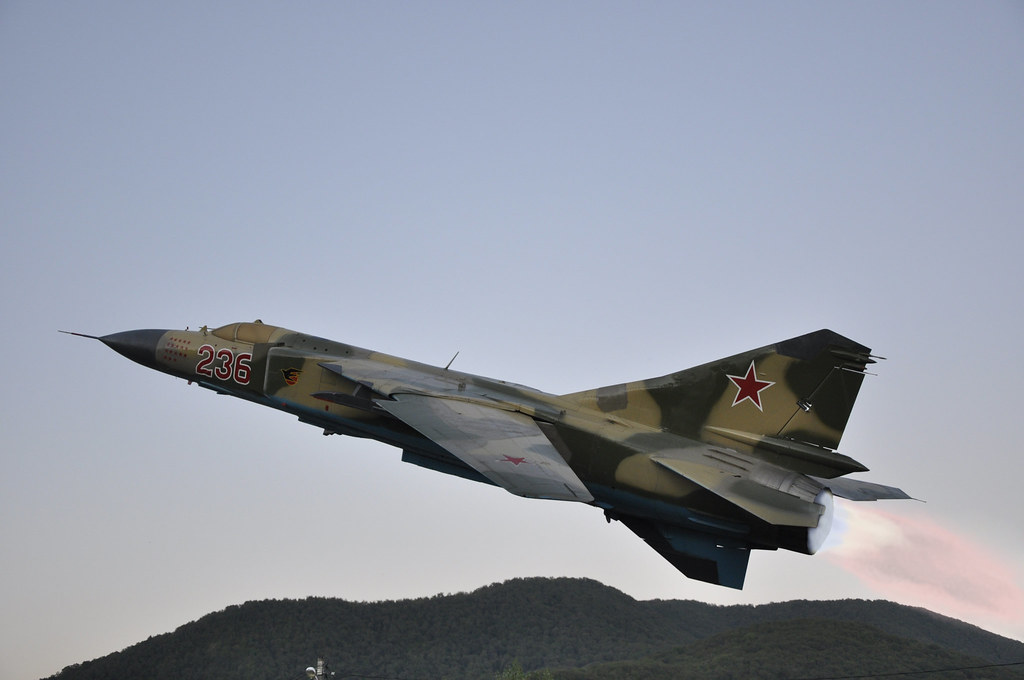
In the annals of military aviation, few fighters have stirred as much discussion as the Soviet-era MiG-23 ‘Flogger.’

Conceived in a burst of Cold War competition to rival the American F-4 Phantom, the MiG-23’s journey from blueprints to battlefields has been fraught with high ambitions and harsh realities.

The ‘Flogger’ sought to dominate the skies with advanced swing-wing geometry and beyond-visual-range intercept capabilities; instead, it became a case study in the perils of cutting corners in military innovation.

The MiG-23 was not necessarily destined to disappoint. On paper, its design was forward-thinking for its time, as it made its operational debut in the early 1970s.

With a twin-barreled 23mm cannon, a mix of short and medium-range air-to-air missiles, and a robust landing gear allowing operations from austere runways, the aircraft had promise.

Yet, the fighter was strategically produced as an export model, compromising its performance and maintenance in favor of cost-efficiency.

This decision reflected a classic case of ‘penny wise, pound foolish’ as the aircraft turned out to be difficult to fly and costly to maintain, with an engine notorious for its short service life.

The MiG-23’s combat record speaks volumes about its operational inadequacies.

Senior Editor Peter Suciu’s stark enumeration of its defeats highlights its struggles: “Over a dozen Syrian MiG-23 jet fighters were shot down by Israeli F-15s and F-16s throughout the Arab-Israeli Wars… Iraqi MiG-23 jet fighters also fared even more poorly against Iran during the Iran-Iraq War, reportedly suffering upwards of fifty losses… Libyan MiG-23s were routinely outperformed by Egyptian MiG-21 jet fighters… and two of these fighters were destroyed by two U.S. F-14 Tomcats during the 1989 Tobruk skirmish.”

Even a token bit of success, such as the damaged F-111 Aardvark by an Iraqi pilot, could not redeem the MiG-23’s overall poor performance during combat engagements like Operation Desert Storm, where seven Floggers fell to F-15Cs.

The MiG-23 did not live up to its NATO moniker ‘Flogger’ in combat. Instead, it often found itself on the receiving end of defeat.

The MiG-23’s remarkable level of thoroughness and consistency in its failures has earned it the rather unfortunate honor of being retired before its intended replacement, the MiG-21 jet fighter.

Despite its shortcomings, the MiG-23 fleet, with over 5,000 units produced, still dots the skies in a few countries, testament to its endurance, if not its prowess.

The ‘Flogger’ will be remembered not just for its myriad operational flaws but as a potent reminder that the path to military innovation is treacherous.

The complex dance of engineering, politics, and economics can lead to compromised outcomes, and the MiG-23 is a timeless exhibit of such pitfalls. History serves as the ultimate arbiter, and for the MiG-23, its legacy is a sobering lesson in both ambition and the harshness of reality.
Relevant articles:
– Russia’s MiG-23 Fighter Has Something the Air Force Can’t Ever Match, The National Interest
– Why the MiG-23 Flogger Ranks as History’s Most Disappointing Fighter Jet, nationalinterest.org

